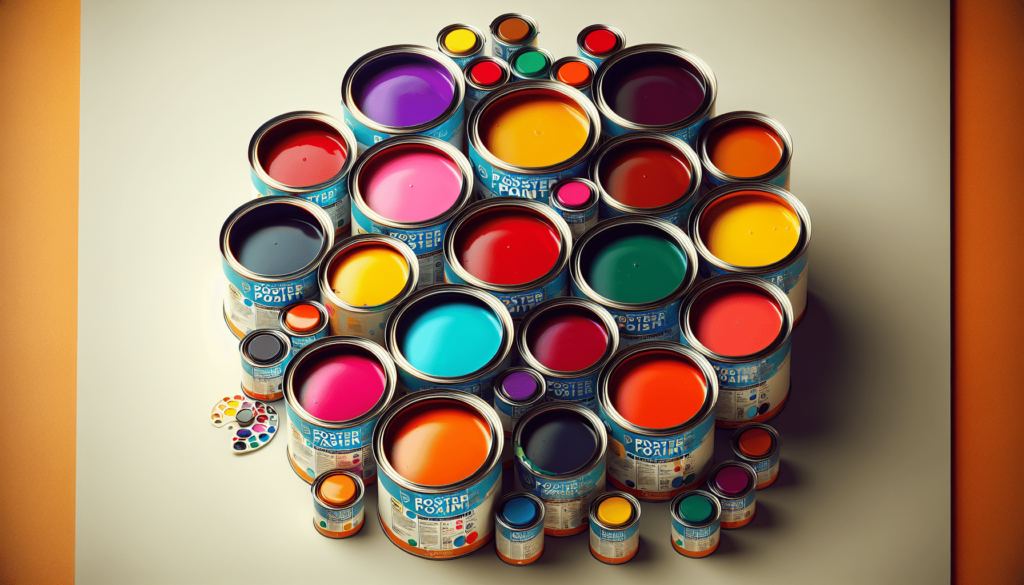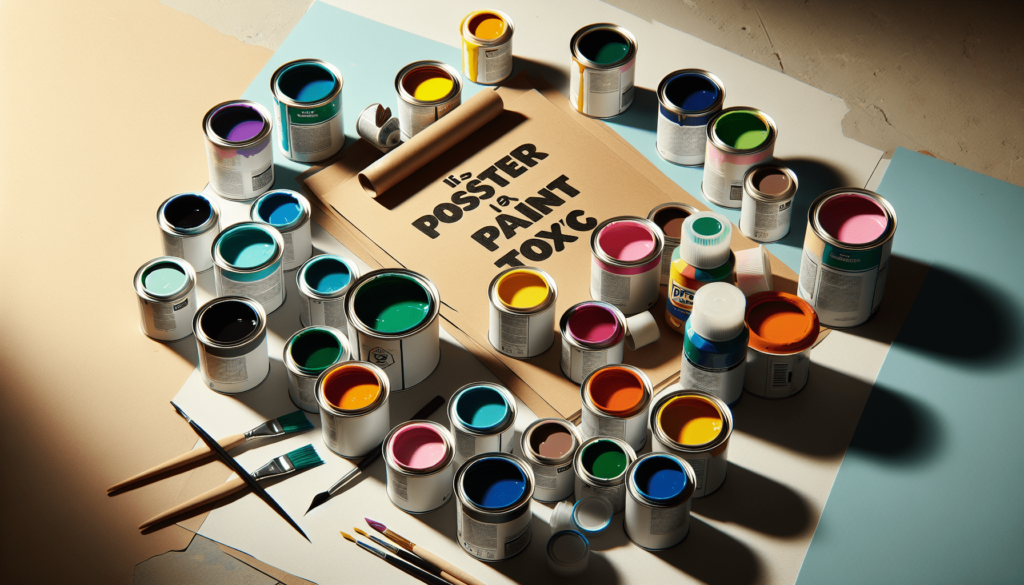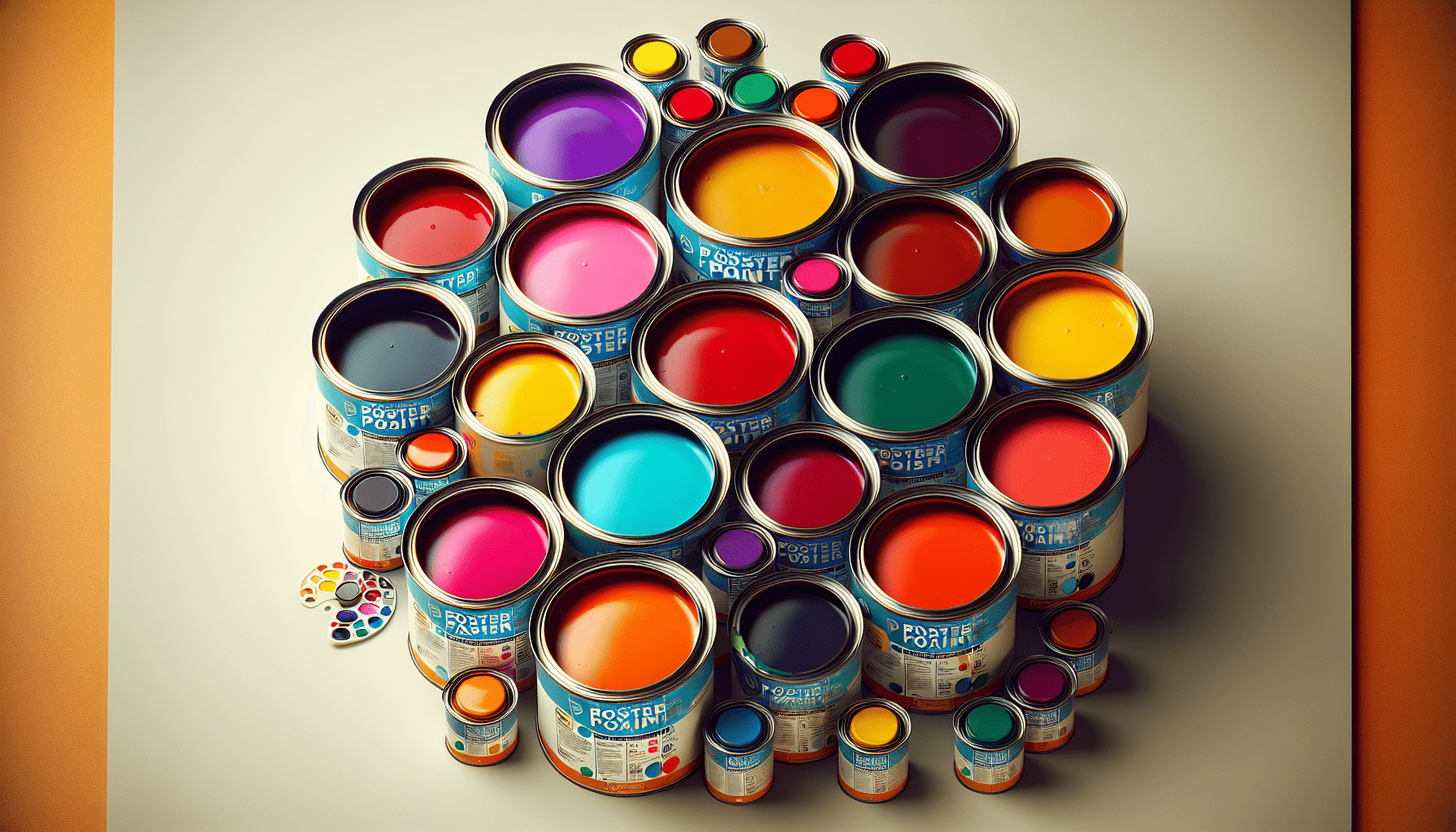Have you ever wondered if poster paint is toxic? As an artist or a parent, you might be concerned about the safety of the materials you use or provide to your children. Understanding the composition and safety of poster paint can help you make informed decisions to ensure the well-being of everyone involved.

What is Poster Paint?
Poster paint is a type of paint commonly used for art and craft projects. It is known for its bright, vibrant colors and ease of use. Unlike some other paints, poster paint is typically water-based, which makes it easy to clean up and suitable for use by both children and adults.
Composition of Poster Paint
Poster paint usually consists of the following components:
- Binder: This component holds the pigment together and allows the paint to adhere to surfaces. Common binders include gum Arabic and other plant-based resins.
- Pigment: These are the substances that give the paint its color. Pigments can be natural or synthetic.
- Solvent: The solvent in poster paint is usually water, making it less harsh compared to solvent-based paints.
- Additives: These can include preservatives, stabilizers, and other chemicals that enhance the paint’s properties.
Are the Ingredients Toxic?
Determining the toxicity of poster paint involves examining each component and its potential hazards. Let’s break down the typical ingredients:
Binder
Most binders in poster paints are non-toxic, especially those that are plant-based. However, always check the product label for any specific warnings or ingredients that could cause concern.
Pigments
The safety of pigments can vary. Natural pigments are generally considered safer, but synthetic pigments can sometimes contain harmful substances like heavy metals (e.g., lead, cadmium). Always look for paints that are labeled as “non-toxic” or certified by a reputable safety standard.
Solvent
Water, the primary solvent in most poster paints, is non-toxic. However, some brands may add other solvents to improve the paint’s performance. Check the label to ensure no harmful solvents are included.
Additives
Additives can be a source of concern. Preservatives and stabilizers in particular could cause allergic reactions or other health issues if they are toxic. Opt for products labeled as free of harmful chemicals or allergens.
Health Risks Associated with Poster Paint
The toxicity of poster paint can pose various health risks, particularly if the paint is not used properly. Here’s a detailed examination of potential health impacts.
Inhalation
Some components in poster paint can emit fumes, especially if they contain volatile organic compounds (VOCs). Inhaling these fumes can cause:
- Respiratory irritation
- Headaches
- Dizziness
Poster paints with low or no VOCs are generally safer for use, particularly in confined or poorly ventilated spaces.
Skin Contact
Direct contact with poster paint can lead to:
- Skin irritation
- Allergic reactions
- Rashes
Always wear protective gloves if you have sensitive skin, and avoid prolonged exposure.
Ingestion
Accidental ingestion of poster paint is more likely when children are using it. Ingesting harmful substances in the paint can lead to:
- Nausea
- Vomiting
- Poisoning
Make sure to supervise children during painting activities and ensure they do not put paint-covered objects or fingers in their mouths.
Environmental Impact
The toxicity of poster paint can also extend to the environment. Some paints may contain substances that are harmful to ecosystems if not disposed of properly. Look for paints that are environmentally friendly or biodegradable.
Regulations and Certifications
When selecting poster paint, it is crucial to rely on products that comply with safety regulations and have appropriate certifications.
U.S. Regulations
In the United States, the Consumer Product Safety Commission (CPSC) regulates the safety of art materials, including poster paint. The Art and Creative Materials Institute (ACMI) also provides a certification seal (AP Seal) to indicate non-toxic products.
European Standards
In Europe, the CE marking is a standard indicating that a product complies with health, safety, and environmental protection legislation. The EN 71 standard specifically covers the safety of toys, including children’s art materials.
Other Certifications
Other certifications you might consider include:
- ASTM D-4236: This standard indicates the product has been evaluated for chronic health hazards.
- Eco-Friendly Labels: Indicating that products are made from sustainable materials and are safe for the environment.

How to Choose Non-Toxic Poster Paint
Choosing non-toxic poster paint ensures you and your children can enjoy creative activities without compromising on safety.
| Feature | Description |
|---|---|
| Non-Toxic Label | Look for labels or certifications indicating non-toxic or AP Seal. |
| Low/No VOCs | Choose paints advertised as low or zero VOC to minimize inhalation risks. |
| Natural Ingredients | Opt for paints made with natural pigments and plant-based binders. |
| Certifications | Check for reputable certifications such as ASTM D-4236, CE marking, or EN 71. |
| Reviews | Read user reviews to gauge the safety and performance of the product. |
Safe Use and Disposal of Poster Paint
Proper use and disposal of poster paint can mitigate health risks and environmental impact.
Safe Use
Here are some tips to ensure safe use:
- Ventilation: Always use poster paint in well-ventilated areas to disperse any fumes.
- Protective Gear: Wear gloves and aprons to avoid skin contact and protect clothing.
- Supervision: Always supervise children to prevent ingestion and ensure safe usage.
Disposal
Improper disposal can harm the environment. Follow these guidelines:
- Do Not Pour Down the Drain: Many communities have specific disposal sites for paints.
- Follow Local Regulations: Check local waste disposal guidelines for hazardous materials.
- Use Up Leftovers: Try to use up any leftover paint in future projects to minimize waste.
Alternatives to Traditional Poster Paint
If you are still concerned about the potential risks, several alternatives to traditional poster paint can offer a safer option.
Natural Paints
Made from natural ingredients, these paints are free from harmful chemicals and are biodegradable. They can include materials such as:
- Plant dyes
- Earth pigments
- Natural binders like casein or milk proteins
Homemade Paints
You can create your own non-toxic paints using simple household ingredients. Examples include:
- Flour-based paint
- Baking soda and vinegar paint
- Natural food coloring mixed with water
Frequently Asked Questions
Is poster paint safe for young children?
Most poster paints labeled as “non-toxic” are safe for children. However, always supervise their activities and ensure they do not ingest the paint.
Can poster paint cause allergic reactions?
Yes, some people may be allergic to certain components in poster paint. If you have sensitive skin or known allergies, check the ingredient list and opt for hypoallergenic products.
How do I know if a poster paint is non-toxic?
Look for certifications and labels such as the AP Seal, ASTM D-4236, or CE marking. These indicate the paint has been evaluated and deemed safe.
What should I do if poster paint is ingested?
If ingested, rinse the mouth and seek medical advice immediately, especially if the paint contains potentially harmful substances.
Conclusion
Understanding the safety and composition of poster paint is vital for making informed choices. While most poster paints are considered safe, especially those labeled as non-toxic, it is essential to remain vigilant about their ingredients and usage. By opting for certified, low-toxicity products and following proper safety and disposal guidelines, you can enjoy creative endeavors without compromising health or the environment.



